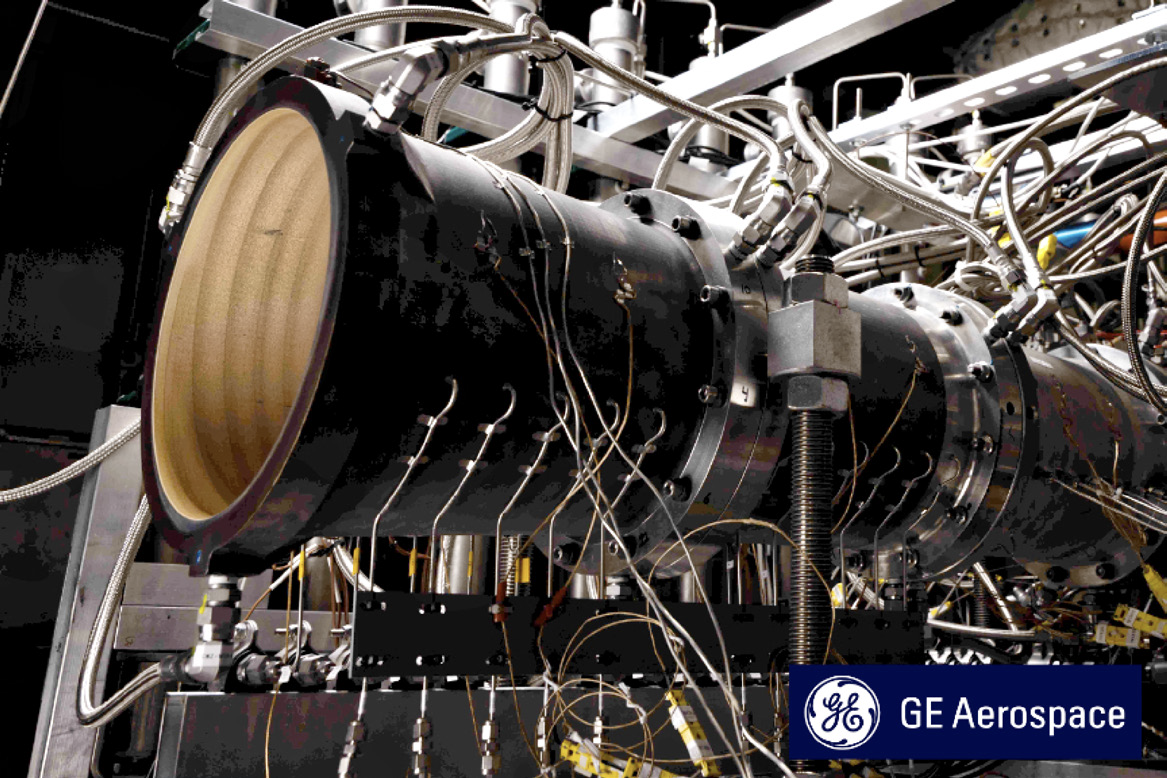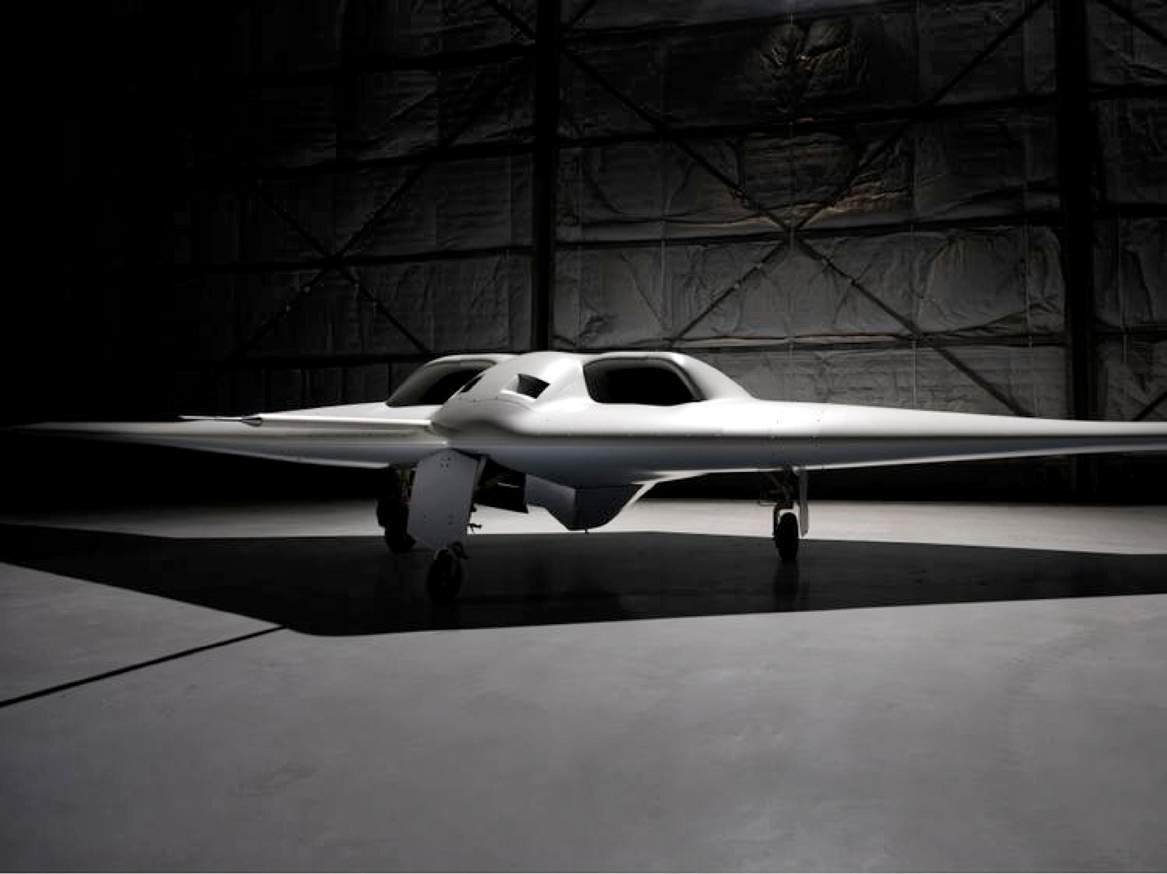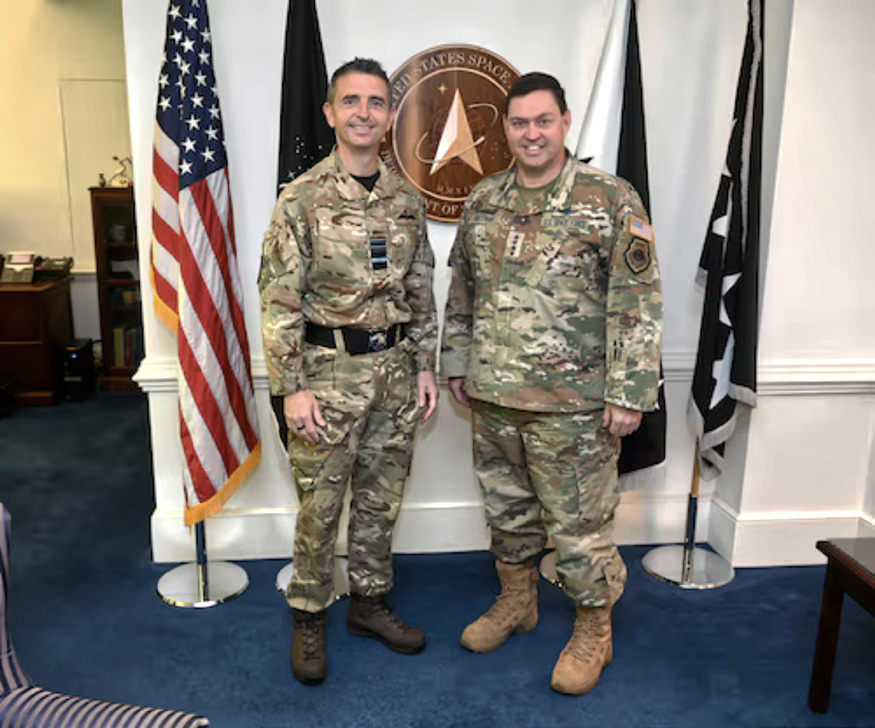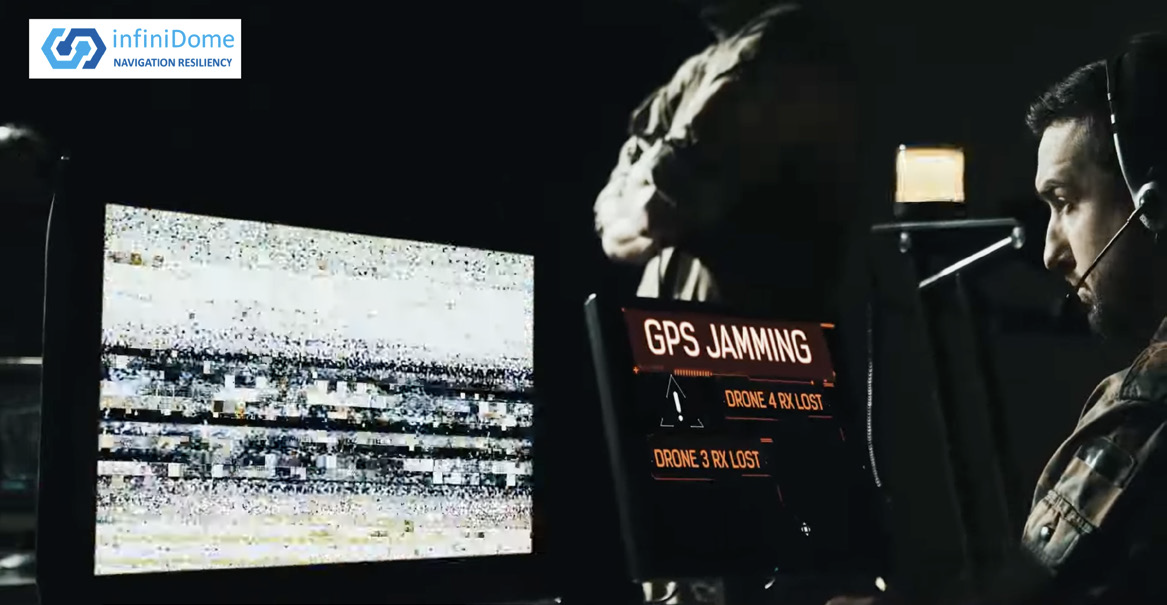NSA publishes guidance for strengthening AI system security
The National Security Agency (NSA) has released a Cybersecurity Information Sheet (CSI) — “Deploying AI Systems Securely: Best Practices for Deploying Secure and Resilient AI Systems.”

The CSI is intended to support National Security System owners and Defense Industrial Base companies that will be deploying and operating AI systems designed and developed by an external entity.
The CSI is the first release from NSA’s Artificial Intelligence Security Center (AISC), in partnership with the Cybersecurity and Infrastructure Security Agency (CISA), the Federal Bureau of Investigation (FBI), the Australian Signals Directorate’s Australian Cyber Security Centre (ACSC), the Canadian Centre for Cyber Security, the New Zealand National Cyber Security Centre (NCSC-NZ), and United Kingdom National Cyber Security Centre (NCSC-UK).
While intended for national security purposes, the guidance has application for anyone bringing AI capabilities into a managed environment, especially those in high-threat, high-value environments. It builds upon the previously released Guidelines for Secure AI System Development and Engaging with Artificial Intelligence.
This is the first guidance led by the AISC and postures the center to support one of its central goals: improving the confidentiality, integrity, and availability of AI systems.
NSA established the AISC in September of 2023 as a part of the Cybersecurity Collaboration Center (CCC). The AISC was formed to detect and counter AI vulnerabilities; drive partnerships with industry and experts from U.S. industry, national labs, academia, the IC, the DoD, and select foreign partners; develop and promote AI security best practices; and ensure NSA’s ability to stay in front of adversaries’ tactics and techniques.
The AISC plans to work with global partners to develop a series of guidance on AI security topics as the field evolves, such as on data security, content authenticity, model security, identity management, model testing and red teaming, incident response, and recovery.
“AI brings unprecedented opportunity, but also can present opportunities for malicious activity. NSA is uniquely positioned to provide cybersecurity guidance, AI expertise, and advanced threat analysis,” said NSA Cybersecurity Director Dave Luber.
GE Aerospace develops + test new hypersonic dual-mode ramjet
GE Aerospace has successfully demonstrated a new, cutting-edge, hypersonic dual-mode ramjet — this achievement – which could enable high-speed flight and longer range across numerous multi-mission aircraft – represents the most recent milestone in a diverse portfolio of hypersonic programs.

The dual-mode ramjet began testing in March of this year in the clean air, continuous flow, high-speed propulsion testing facility in Evendale, Ohio, just 11 months after the launch of the design effort.
The testing delivered promising results, exceeding performance expectations and demonstrating robust operation of a dual-mode ramjet with a threefold (3X) increase in airflow compared to previously flight-tested hypersonic technology demonstrators.
The successful development and testing of the dual-mode ramjet in such a short period of time was made possible through the collaboration of GE Aerospace’s team of engineers, Innoveering – a company acquired by GE Aerospace in 2022 that specializes in hypersonic propulsion – and GE Aerospace’s Research Center.
“The rapid progression from design to testing underscores our commitment to driving innovation in hypersonic technologies,” said Amy Gowder, president and CEO of Defense & Systems at GE Aerospace. “This milestone not only shows the exceptional talent and dedication of our team but also reaffirms our position as a leader in the pursuit of hypersonic flight.”
“The technology’s robust performance paves the way for the next phase of development, which will focus on continued testing and technology demonstration in alignment with our roadmap for integrated high-speed propulsion solutions,” said Mark Rettig, vice president and general manager of Edison Works Business & Technology Development at GE Aerospace.
Northrop Grumman builds next generation hybrid electric uncrewed X-Plane for DARPA
Northrop Grumman Corporation (NYSE: NOC) has announced the design and construction of the Series Hybrid Electric Propulsion AiRcraft Demonstration (SHEPARD) vehicle — this uncrewed air system developed for DARPA recently received an official X-plane designation of XRQ-73.

Built in collaboration with Scaled Composites, a Northrop Grumman subsidiary, the XRQ-73 SHEPARD is a DARPA “X-prime” program leveraging hybrid electric architecture and component technologies to quickly mature a new mission-focused aircraft design with propulsion architecture and power class for the Department of Defense (DoD).
DARPA adds...The Series Hybrid Electric Propulsion AiRcraft Demonstration program, known as SHEPARD, has received its official X-plane designation: XRQ-73.
SHEPARD is an “X-prime” program, leveraging the series hybrid electric architecture and some of the component technologies from the earlier AFRL/ IARPA Great Horned Owl (GHO) project.
The DARPA team includes members from the Air Force Research Laboratory (AFRL), the Office of Naval Research (ONR), and our warfighters.
The prime contractor for SHEPARD is Northrop Grumman Corporation’s Aeronautics Systems sector in Redondo Beach, California. Scaled Composites, LLC is a major supplier, along with Cornerstone Research Group, Inc., Brayton Energy, LLC., PC Krause and Associates, and EaglePicher Technologies, LLC.
The XRQ-73 aircraft will be a Group 3 UAS weighing approximately 1,250 Q-73 is expected by year-end 2024.
Hughes Europe expands into Military, Defence & Government sectors with Launch of Konnect VHTS Services in Collaboration with Telespazio
HughesEurope, a subsidiary of HughesNetworkSystems,LLC,an EchoStar company (Nasdaq: SATS), has announced the company’s strategic expansion into the Military, Defence, and Government sectors across pan- European nations — TroyTrumanhas joined Hughes and will act as the head of this initiative.

The initiative will meet the increasing demand for high-speed connectivity and the growing security concerns around Europe’s advancing military and governmental requirements for IntelligenceSurveillanceandReconnaissance(ISR) and BeyondVisualLineofSight(BVLoS) connectivity, high data rate requirements of modern operations, and robust managed communication networks.
Drawing on the experience of Hughes US Defense and Government Systems Division (DGSD) and collaborating with Telespazio, Hughes Europe’s new business unit will provide leading communications solutions to government communications ministries and military operators, as well as blue light services.
Introducing fully managed, multi-orbit network solution software, an SDR waveform agnostic ISR terminal and a secure standalone 5G solution in the hope of boosting military Command, Control, and Communications in the operational environment, as well as servicing the high data demands of government bodies.
Hughes Europe and Telespazio will offer cutting-edge services leveraging the innovative Eutelsat Konnect VHTS(K-VHTS) satellite. Built on the Hughes JUPITER™ System series 3, the K-VHTS satellite provides high-speed service across Europe, and the companies will use Hughes JUPITER terminals.
Telespazio is the exclusive commercial provider for defence and governmental security services and Hughes will provide expertise in satellite broadband managed services.
Chris Britton, managing director of Hughes Europe, said, “The Hughes JUPITER System is the de facto standard for satellite implementations worldwide. The Konnect VHTS satellite utilizes our JUPITER System, and we are thrilled to collaborate with Telespazio to deliver reliable, high-speed connectivity solutions to our customers. This announcement underscores the value of our longstanding relationship and our shared commitment to providing extraordinary technology and exceptional customer service.”
Alessandro Caranci, head of Satellite Communication Line of Business at Telespazio, said, “I am pleased to share with a champion like Hughes Europe the ambition to provide revolutionary services for the government and B2B market. Our respective expertise and geographic basis for achieving our goals.“
Shield AI’s V-BAT selected for million$$$ contract for USCG UAS services
Shield AI has announced that the U.S. Coast Guard has awarded the company a $198,106,876 IDIQ firm, fixed-price contract to provide Contractor Owned Contractor Operated (COCO) Intelligence, Surveillance, and Reconnaissance (ISR) services. This service will be implemented using the V-BAT unmanned aircraft system (UAS).

Shield AI’s V-BAT selected for million$$$ contract for USCG UAS services Coast Guard Cutter David Duren was commissioned on June 27, 2024, in Astoria, Oregon, where it will be homeported. U.S. Coast Guard photo by Petty Officer 2nd Class Steven Strohmaier.
The V-BAT series aircraft is the only operationally deployed, single-engine, ducted fan, vertical takeoff and land (VTOL) UAS that can launch and recover from a hover and fly on wing in horizontal flight. With more than five years of persistent operational experience at sea, U.S. and international customers view the V-BAT as a flexible platform capable of performing Group 2 to Group 5 UAS missions and beyond.
“We’re excited to support the U.S. Coast Guard with their ISR operations. All maritime vessels will become drone carriers as maritime forces move to deploy distributed, affordable, intelligent drones. V-BAT’s selection by the U.S. Coast Guard is indicative of a broader market movement where increasingly customers are recognizingtheycanaccomplish the vast majority of their mission sets with affordable drones rather than exquisite, expensive crewed or uncrewed aircraft,” said Brandon Tseng, Shield AI’s President, Co-founder and former Navy SEAL.
Satcom Global awarded a GSA contract extension to supply SATCOM to US Government
Satcom Global Inc. has secured a new five-year GSA (General Services Administration) Contract, which permits the supply satellite airtime and equipment to US Government departments and agencies.

Satcom Global’s varied portfolio of land-based satellite communications includes both contract and prepay airtime services along with a wide range of associated hardware, many of which are military grade. Equipment ranges from portable handheld satellite phones such as the Inmarsat IsatPhone2, Iridium 9555 to the rugged and reliable Iridium Extreme 9575.
Satcom Global has also made it easier for customers to purchase and manage their satellite communications on an ongoing basis with our management platform GlobalNet. This online portal enables customers to purchase their own prepay vouchers and top-up their accounts in a quicker, more convenient way.
Bo Feely, Vice President Americas, said, “We are pleased to share that we have been awarded a new GSA contract, allowing us to continue providing satellite communications equipment and services to the US Government. This new 5-year contract reflects our dedication to delivering reliable and advanced solutions, ensuring we can meet the government’s communication needs well into the future.“
BAE Systems awarded $111 million in contracts to bring modernized, secure communications to the Republic of Korea
"BAE Systems received multiple contracts totaling $111 million to provide the second-generation, Anti-jam, Tactical, Ultra-high Frequency Radio for NATO, or SATURN waveform, to the Republic of Korea (ROK)

Lockheed Martin awarded contract to develop AI tools for DARPA
Lockheed Martin(NYSE: LMT) was recently awarded a $4.6 million contract by the Defense Advanced Research Projects Agency(DARPA) to develop Artificial Intelligence (AI)tools for dynamic, airborne missions as part of its Artificial Intelligence Reinforcements (AIR) program.
This project aims to provide advanced Modeling and Simulation (M&S) approaches and dominant AI agents for live, multi-ship, beyond visual range (BVR) missions. It is a critical step in prioritizing and investing in breakthrough technologies for national security and to meet the evolving needs of customers.

DARPA’s AIR program will improve the government-provided baseline models’ speed and predictive performance to better match how the Department of Defense’s systems perform in the real world.
During the 18-month period of performance, Lockheed Martin will apply AI and Machine Learning (ML) techniques to create surrogate models of aircraft, sensors, electronic warfare and weapons within dynamic and operationally representative environments
“In complex airborne missions, our customers need access to advanced technologies that connect critical systems quickly across all domains. The DARPA AIR program will use state-of-the-art scientific ML technology and Lockheed Martin’s ARISE™ infrastructure to deliver unprecedented amounts of data that service members can use to make faster and more informed decisions,” said Gaylia Campbell, vice president of Engineering and Technology for Lockheed Martin Missiles and Fire Control. “This will provide significant cost savings opportunities for the Department of Defense and serve as a foundation for future AI defense solutions, ensuring the U.S. and its allies maintain their competitive advantage no matter the circumstances.”
The United States Space Force (USSF) Chief of Space Operations
The United States Space Force (USSF) Chief of Space Operations, General Chance Saltzman has announced a new addition to the Space Force headquarters staff, bringing a member of the United Kingdom’s Royal Air Force to the organization.
Air Marshal Paul Godfrey accepted the position on June 17th. and will serve the U.S. Space Force as assistant chief of Space Operations for Future Concepts and Partnerships after three years as the first commander of the U.K. Space Command.

Left, Air Marshal Paul Godfrey Right, General Chance Saltzman
Photo is courtesy of USSF
“This is a significant step forward in promoting closer cooperation with an important ally, and it exemplifies the kind of partnership we need to internalize as a service,” Saltzman said in a letter distributed to Guardians. “AM Godfrey’s integration into a senior service staff is unprecedented, and it pushes the boundaries of what it means to be Integrated by Design.”
In his new role, Godfrey assumes the rank of air marshal, equivalent of lieutenant general, and will advise Saltzman in all matters related to the achievement of space superiority and resilience through international partnerships.
“The U.S. has a long history of international cooperation and collaboration in all domains, including space,” Godfrey said. “Partnerships allow us to build trust, share information and truly integrate operations to maximize resilience and defend against aggressive behavior. It is a real honor to serve in this new position alongside my U.S. counterparts to deepen allied relationships and promote safety and security in space.”
One of the Space Force lines of effort is “Partner to Win” – emphasizing the importance of mutually beneficial relationships across the international community, joint force and industry.
“Partnerships are integral to the success of the Space Force,” Saltzman added. “We depend on the Air Force for vital infrastructure and mission support functions, we leverage commercial partnerships
for technical acumen and a robust industrial base, and we rely on our international allies as critical force multipliers who expand our resilience and competitive advantage.”
Godfrey was the inaugural commander of the U.K. Space Command, which was established April 1, 2021. Prior to this role, he served in the Middle East within the U.S. Air Force’s Combined Air and Space Operations Center, was head of Carrier Enabled Power Projection for the U.K.’s Ministry of Defence, and was Station Commander of RAF Lossiemouth, a Typhoon base in Scotland.
The Air Marshal was also a previous exchange pilot with the U.S. Air Force, serving on the 55th Fighter Squadron, Shaw Air Force Base, South Carolina, from August 2000 to May 2003.
infiniDome showcases battlefield-proven GPS protection & resilience
infiniDome has recently experienced a significant increase in demand, mainly due to the issue that has escalated over the past two years — GNSS interferences has become a critical concern in conflict zones, such as Israel, Ukraine, and many parts of Europe.
The company’s extensive experience on the battlefield, particularly in recent conflicts in Israel and Europe, has positioned infiniDome’s products as trusted and reliable navigation resiliency solutions defending UAVs and other platforms.

Infini Dome’s newest solution — GPSdome2 — is officially recognized for its battlefield readiness and offers flexible GNSS protection of two bands (L1/E1+L2 or L1 + G1 or L1/E1 + L5) from as many as three directions of simultaneous jamming, all in a small box.
The unit is C-SWaP (Cost, Size, Weight, and Power) optimized and fully retrofit, making it ideal for protecting almost any platform, even small Class II UAVs, without the need for major modifications.
As GNSS interferences continue to rise all over, infiniDome has responded fast with pioneering a new anti-jamming approach they call “software- defined GNSS anti-jamming.”
This approach allows infiniDome to leverage its flexible SW core to adapt to different and rapidly evolving threats in the field with simple SW upgrades even to fielded units before going into battle.
This proactive approach has led to a surge in inquiries from both defense and commercial sectors which are looking for robust solutions capable of sustaining operations under the most challenging conditions in the face of EW attacks.
“Compared to other solutions in the market, the fact that our company focuses only on GNSS anti-jamming solutions, allows us not only to be experts in what we’re doing, but also to leverage our flexibility and agility to meet, head on, new threats and challenges from the field, a significant advantage at wartime when the spectrum is rapidly changing,” said Omer Sharar, CEO, and Co-founder. “With our deep understanding and thorough analysis of the challenges faced in these warzones, we design our solutions to meet not only the most stringent C-SWaP (Cost, Size Weight and Power) requirements but also to be fully battle-ready - ensuring reliability and allowing our customers to complete their mission when it matters most.”



